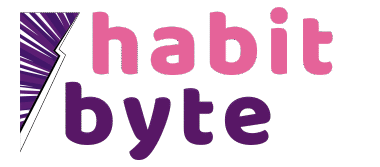Introduction: The Power of Mindful Living
Have you ever found yourself reaching for that third cup of coffee, mindlessly scrolling through social media, or reacting impulsively to a stressful situation? These are examples of automatic, or uncontrolled, human behavior. Often, we operate on autopilot, allowing ingrained habits and impulses to guide our actions, instead of making mindful, intentional choices. In this comprehensive guide, we’ll delve into the science of human action models, explore the benefits of mindful living, and provide practical insights to help you shift from automatic behaviors to mindful, intentional action. This transformation is not just about breaking bad habits, but about fundamentally changing how we interact with the world and ourselves.
Section 1: Understanding Automatic Behavior
Automatic actions occur when we act without conscious thought, typically driven by habits, impulses, and default behaviors. These actions are often misaligned with our goals, leading to stress accumulation and feelings of unfulfillment. For example, you might automatically reach for a sugary snack when stressed, despite trying to eat healthier, or respond with anger in a heated conversation, damaging your relationships. By understanding these automatic behaviors, we can start to control them and make more mindful choices.
Sub-section: Examples of Automatic Behavior
Examples of automatic behaviors are everywhere in our daily lives. From the moment we wake up and reach for our phones, to the way we respond to stress, to our evening routines, we are constantly acting out of habit. These automatic behaviors can be harmful to our wellbeing and productivity. They can lead to unhealthy habits, wasted time, and missed opportunities. But by recognizing these behaviors and understanding their triggers, we can start to control them and make more mindful choices.
Section 2: The Benefits of Mindful Living
On the other hand, the mindful or intentional action model involves acting with awareness and purpose. It starts with empowering beliefs, which shape our life vision. This vision then informs our supporting habits and daily routines, leading to a sense of fulfillment. Embracing this model can lead to greater alignment with our values, enhanced personal growth, and reduced stress.
Sub-section: How Mindful Living Can Improve Your Life
By embracing mindful living, you can start to see significant improvements in many areas of your life. You may find that you are more focused and productive, that you have more energy and less stress, and that you are more satisfied with your life overall. Mindful living can also help you improve your relationships, as you become more aware of your actions and how they affect others.
Section 3: Practical Steps to Shift from Automatic to Mindful Living
Moving from automatic to mindful action involves increasing self-awareness, practicing mindfulness, and reflecting on your actions. Start by identifying one automatic behavior you’d like to change. Then, use mindfulness techniques to catch yourself in the act and choose a more intentional action instead. Journaling can also help track your progress and provide insights into your behavior patterns.
Sub-section: Tips for Mindful Living
Here are some practical tips to help you embrace mindful living:
- Start small: Instead of trying to change everything at once, focus on one small change at a time.
- Practice mindfulness: Make a conscious effort to be present in each moment, instead of letting your mind wander.
- Reflect on your actions: Take time each day to reflect on your actions and how they align with your values and goals.
Conclusion: The Journey from Automatic to Mindful Living
Transitioning from automatic to mindful action involves understanding the difference between uncontrolled and mindful behavior, recognizing the role of beliefs and vision in guiding action, and implementing supporting habits and routines. Start with one belief, one habit, and one intentional routine. Remember, the journey to mindful living is a continuous process of growth and learning. Let’s start transforming your life today!
For further resources, check out our articles on Mindfulness Techniques and Creating Effective Routines.
